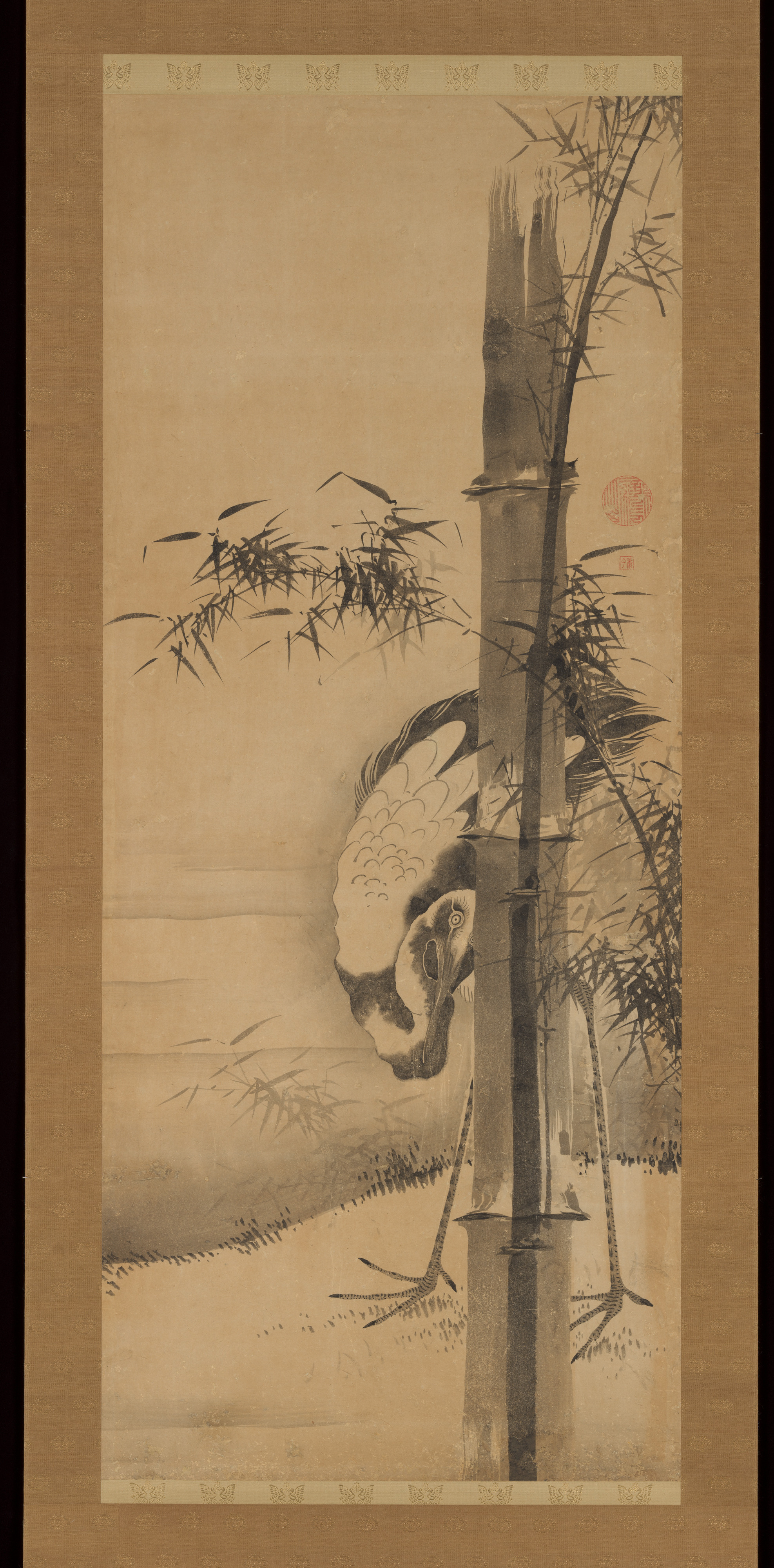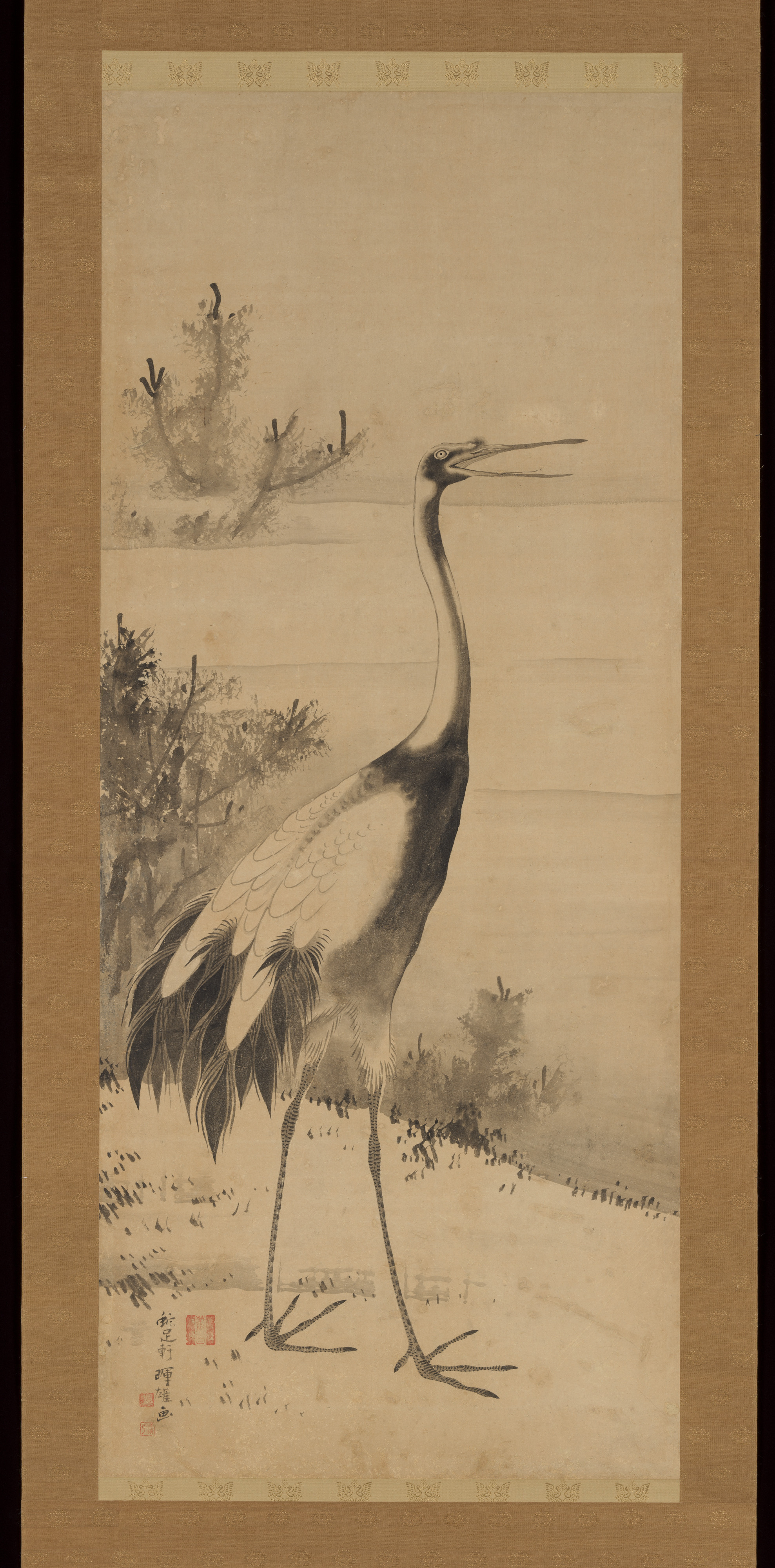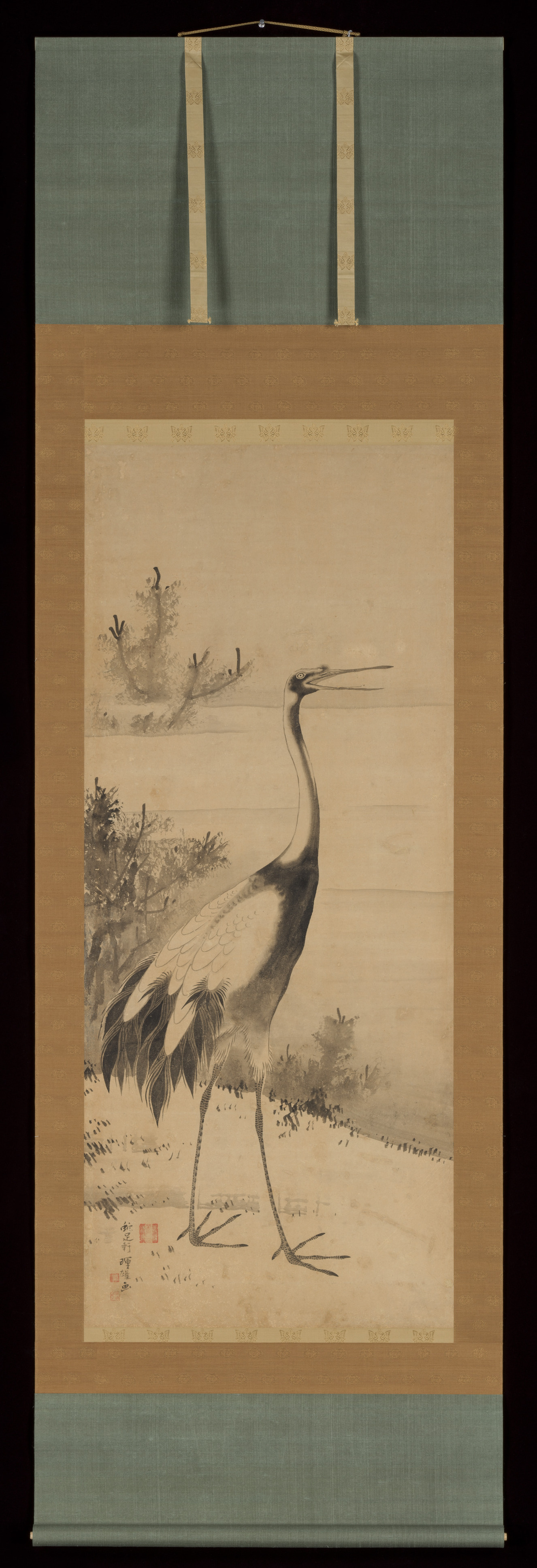Cranes
Soga Shōhaku 曾我蕭白 Japanese
Not on view
Two cranes, one striding aggressively forward with open beak, the other with its head gracefully lowered as if in submission, face each other within the diptych format. Crisp, precise brushwork outlining the cranes’ plumage, and the combination of brush lines and wash used to delineate their bodies can also be seen in the mix of line and wash on the foliage in the left scroll and the bamboo branches and leaves on the right. The composition derives from the old tradition of Muromachi-period ink painting, but here the cranes—symbols of longevity and good fortune—are depicted with almost human-like expressions that enliven the image. This characteristic appears in other paintings by the unconventional and “eccentric” Soga Shōhaku.
One of the major Japanese artists of the eighteenth century, Shōhaku’s outlandish behavior, sometimes unrestrained approach to painting (especially in his early career), and rebellious personality were noted by his contemporaries. His individuality and “modern” sensibilities are much appreciated today.
Due to rights restrictions, this image cannot be enlarged, viewed at full screen, or downloaded.
This artwork is meant to be viewed from right to left. Scroll left to view more.






